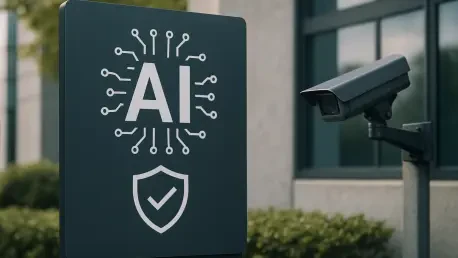Market Context: The Growing Cybersecurity Challenge
In the fast-evolving digital landscape of 2025, cybersecurity teams face an unrelenting surge of threats, with attack surfaces expanding at an alarming rate, pushing human remediation capacities to their limits. The sheer volume of vulnerabilities, fueled by adversaries wielding AI-driven automation, has created escalating risks evident in the mounting security debt that enterprises struggle to manage, as the mean time to detect and address vulnerabilities continues to widen. AI-powered automation emerges as a potential lifeline to scale risk reduction, yet a profound paradox persists: despite significant investments and technological advancements, security teams remain hesitant to fully adopt these solutions. This market analysis explores the dynamics behind this trust gap, dissects current trends in AI adoption for cybersecurity, and projects future shifts in this critical sector.
Market Trends: Investment Surge Meets Adoption Hesitation
Explosive Growth in AI Cybersecurity Funding
The cybersecurity market has witnessed a remarkable influx of capital into AI-driven solutions, reflecting investor confidence in their transformative potential. Venture capital investments in AI-focused cybersecurity firms have shown substantial growth, with funding nearly doubling in recent years, reaching hundreds of millions annually, as reported by industry research. This financial backing underscores a belief that AI can address the scalability issues plaguing traditional security approaches. Startups and established vendors alike are racing to develop tools that promise real-time threat detection and automated remediation, positioning AI as a cornerstone of modern defense strategies. However, the translation of this investment into widespread adoption remains uneven, highlighting a disconnect between market enthusiasm and practical implementation.
Slow Adoption Rates Despite Technological Promise
Despite the financial momentum, the uptake of AI-driven remediation tools within security operations reveals a cautious approach. Many organizations limit AI applications to low-risk tasks such as basic detection and prioritization, rather than granting autonomy for critical fixes. This hesitancy stems from a lack of trust in AI systems, often criticized for their opaque decision-making processes. Market data suggests that while enterprises are procuring these technologies, they frequently impose strict controls, preventing full automation. This trend of restricted deployment indicates a broader challenge in the industry: balancing the need for rapid response with the fear of unintended disruptions caused by untested AI actions.
Regional and Sectoral Variations in AI Integration
Adoption patterns also vary significantly across regions and industries, shaped by regulatory environments and organizational cultures. In markets with stringent data protection laws, such as the European Union, compliance concerns around automated decision-making slow the integration of AI tools. Conversely, sectors like finance, where downtime costs are exorbitant, exhibit greater caution compared to tech-driven industries more open to experimentation. These disparities point to a fragmented market landscape where cultural resistance and regulatory frameworks play as significant a role as technological readiness. Understanding these variations is crucial for vendors aiming to tailor solutions that address specific market needs and build trust across diverse contexts.
Market Barriers: Why Trust Remains Elusive
Opacity in AI Systems as a Core Concern
A central obstacle in the cybersecurity AI market is the lack of transparency in how these systems operate. Security professionals, often seasoned and skeptical, are wary of the “black box” nature of many AI platforms, where the logic behind recommendations or actions remains unclear. Without explainability, validating AI outputs becomes a daunting task, leading to reluctance in high-stakes environments. Industry insights reveal that this distrust confines AI usage to peripheral roles, far from the autonomous remediation it is capable of achieving. Bridging this gap requires vendors to prioritize transparency, ensuring that decision-making processes are accessible and verifiable to end users.
Fear of Unintended Outcomes Hindering Progress
Another significant barrier lies in the potential for AI-driven actions to cause unforeseen issues, such as system downtime or new vulnerabilities. For instance, an automated patch might conflict with custom configurations, disrupting critical operations. This risk aversion is particularly acute in industries where operational continuity is paramount, driving a preference for human oversight over machine autonomy. Current market trends show a preference for supervised automation, where human approval precedes AI actions, as a compromise to mitigate risks. This cautious approach, while safer, limits the scalability benefits that full automation could deliver, stalling market progression toward more efficient security practices.
Cultural and Structural Resistance Across Organizations
Beyond technical concerns, cultural and organizational factors within enterprises further impede AI adoption in cybersecurity. Many security teams operate within entrenched hierarchies that favor manual control over automated systems, viewing AI as a potential threat to job roles rather than a supportive tool. Misconceptions about AI replacing human expertise exacerbate this resistance, often overshadowing its capacity to enhance strategic decision-making. Market analysis indicates that overcoming these barriers necessitates not only technological advancements but also educational initiatives and leadership commitment to reposition AI as a collaborative asset. Shifting mindsets remains a critical challenge for market growth in this domain.
Future Projections: AI’s Evolving Role in Cybersecurity
Innovations Driving Market Transformation
Looking ahead, the cybersecurity market is poised for significant evolution as AI technologies mature. Innovations such as real-time exposure detection and advanced risk prioritization are expected to become standard offerings, with agentic AI systems—capable of independent action within defined boundaries—paving the way for self-healing infrastructures. These advancements promise to reduce the burden on human analysts for routine tasks, allowing focus on complex threats. Market forecasts suggest that economic pressures, including the escalating costs of breaches, will compel organizations to embrace these solutions despite initial reservations, driving a steady increase in adoption rates over the next few years.
Regulatory and Policy Shifts on the Horizon
The regulatory landscape surrounding AI in cybersecurity is also anticipated to evolve, influencing market dynamics. Emerging frameworks are likely to focus on ensuring transparency and accountability in AI operations, addressing current trust deficits. Policies that mandate clear guidelines for AI autonomy could facilitate a shift from hands-on human oversight to strategic policy-setting roles. Analysts predict that such regulatory clarity will encourage broader market acceptance, particularly in cautious regions, fostering an environment where AI can operate within trusted parameters. This alignment of policy and technology is expected to be a key driver of market expansion.
Changing Roles and Market Opportunities
As trust in AI grows, the role of security professionals is projected to transform, creating new market opportunities. Analysts will likely transition from tactical responders to strategic orchestrators of AI agents, focusing on edge cases and system tuning. This shift opens avenues for vendors to develop training programs and tools tailored to these evolving needs, further expanding the market. Projections indicate that within the next few years, from 2025 to 2027, the cybersecurity sector could see a significant uptick in demand for hybrid human-AI solutions, positioning companies that address trust barriers as market leaders in this transformative era.
Strategic Reflections and Recommendations
Reflecting on the market analysis, it becomes evident that the reluctance to adopt AI-driven automation in cybersecurity stems from deep-seated concerns over transparency, risk, and cultural inertia. The significant investments and technological advancements have laid a robust foundation, yet the gap between potential and practice remains wide due to trust issues. The variations across regions and sectors further underscore the complexity of achieving uniform adoption, highlighting the need for tailored approaches in this fragmented market.
To navigate these challenges, stakeholders are encouraged to adopt a phased strategy that prioritizes building confidence in AI systems. Vendors need to focus on delivering explainable AI, ensuring that security teams can understand and validate automated decisions. Enterprises, on the other hand, must implement supervised automation as a stepping stone, gradually scaling up to policy-driven autonomy while maintaining human-defined guardrails. Additionally, fostering a cultural shift through education and leadership advocacy is deemed essential to reframe AI as a partner rather than a threat. By taking these deliberate steps, the cybersecurity market can move toward a future where automation scales risk reduction beyond human limitations, ultimately strengthening digital resilience.









